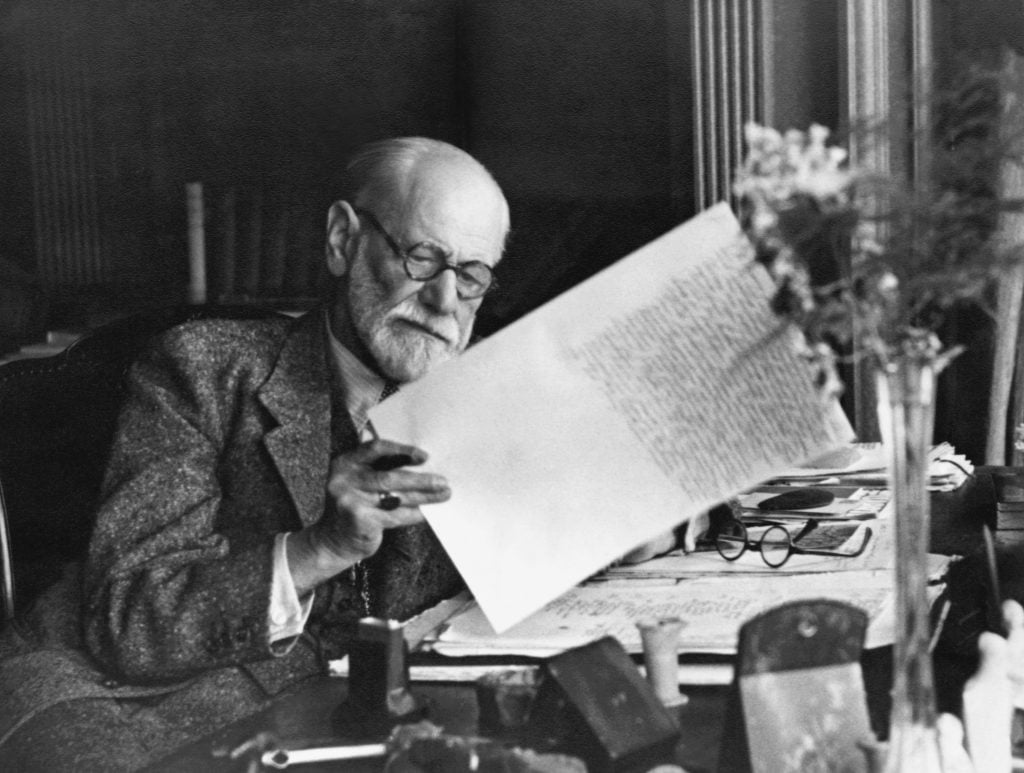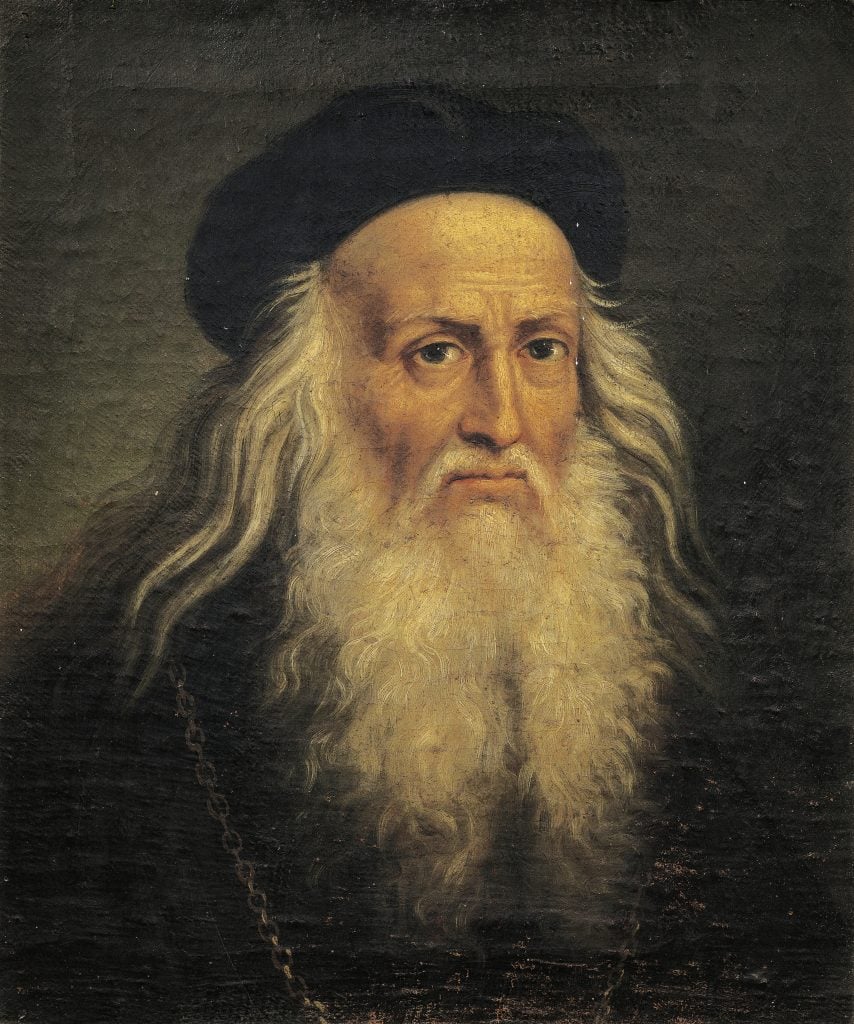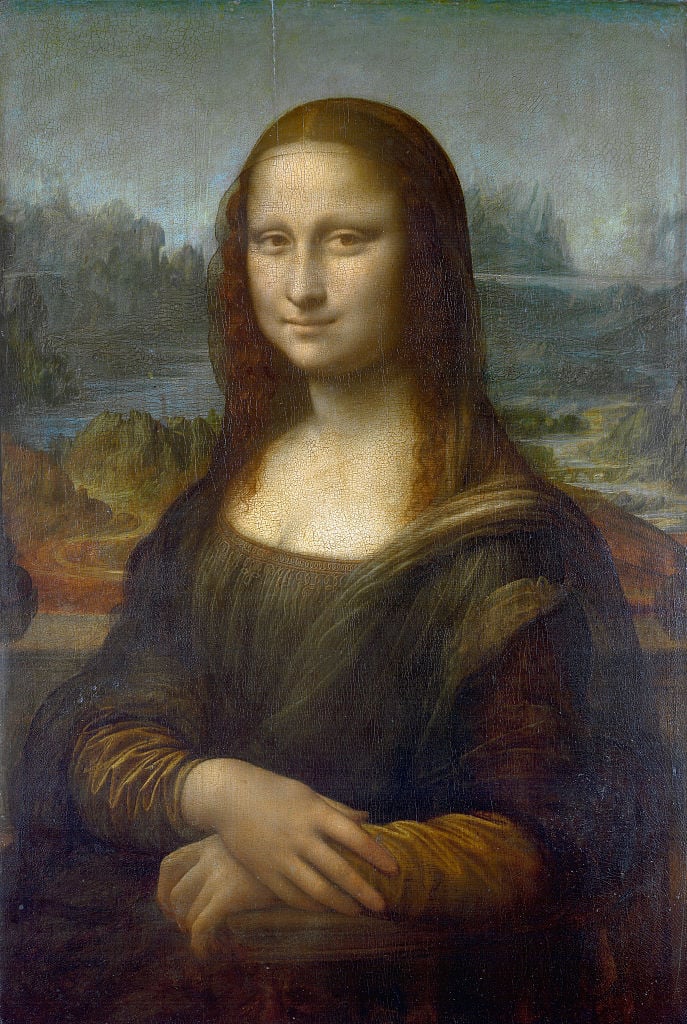Art World
Art Bites: Why Was Sigmund Freud So Obsessed With Leonardo da Vinci?
The psychoanalyst described the artist as being of the "obsessive brooding" type.

In a 1909 letter, Sigmund Freud wrote to fellow psychoanalyst Carl Jung that he had encountered a “neurotic” patient whose sexual inactivity and inability to finish tasks was reminiscent of Leonardo da Vinci, even if the man, Freud made clear, didn’t share Leonardo’s genius.
Freud had long been intrigued by the Renaissance polymath (an obscure 1900 Russian novel on Leonardo was among his favorites), but his new Viennese patient prompted a deeper investigation. In a frenzy, Freud gathered histories, criticisms, novels, replica works and in 1910 published Leonardo da Vinci, A Memory of His Childhood. Freud abhorred biographies, considering them a form of hero worship and a genre in which the author indulged in “infantile fantasies” akin to a child venerating its father. He made an exception for Leonardo and himself.
Freud was drawn to Leonardo for the same reasons the Renaissance figure fascinates and beguiles people today: he’s enigmatic.
Professionally, here was the greatest artist of his day who not only eschewed financial riches (unlike, say, his peer Perugino), but increasingly chose private musings over painting.
Personally, Freud found Leonardo brilliantly conflicted: a vegetarian who was content to dissect humans and animals, an outspoken war critic who devised weapons, a profoundly sympathetic man who sketched the expressions of criminals bound for execution, someone disgusted by lust and procreation who mastered painting feminine sensuality.

Portrait of Leonardo da Vinci, by Lattanzio Querena. Padova, Medieval And Modern Art Museum. Photo by DeAgostini/Getty Images.
Freud’s essay tackled the two eternal Leonardo questions. First, why was he so good at everything? Second, why is Mona Lisa’s smile so captivating?
As with the Austrian’s own patients, he began by delving into Leonardo’s early biography. The problem, as Freud acknowledged, is that there’s not much to work with. In short, Leonardo was born outside of Florence as the illegitimate child of Caterina, a peasant, and Ser Piero, a notary who would eventually take Leonardo in with his wife, Donna Albiera.
Prior to this adoption, Freud wrote that baby Leonardo’s mother doted on him, resulting in a “precocious sexual maturity.” Once puberty arrived, what propelled Leonardo’s innate ingenuity was “sublimating the greater part of his libido into an urge for research.” Freud called this “a rarest and most perfect” quality. Leonardo neither married nor had love affairs. He was, as the modern saying goes, married to his work, and his work was whatever he found interesting.
As for Mona Lisa’s bewitching smile, Freud employed an anecdote from Leonardo’s Codex Atlanticus as translated by Marie Herzfeld: “When I was still in the cradle, a vulture came down to me, he opened my mouth with his tail and struck me a few times with his tail against my lips.” Freud believed this earliest memory was a breast feeding or kissing fantasy with the vulture representing his mother. Unfortunately, as Freud discovered soon after publishing, Herzfeld had made a translation error and the vulture was actually a kite.

Leonardo da Vinci, Mona Lisa. Photo by VCG Wilson/Corbis via Getty Images.
Nonetheless, Freud believed Leonardo’s early clay sculptures of children’s heads and a laughing woman were veiled representations of Caterina and himself. Later, when he met Lisa del Giocondo, Freud wrote that she “awakened in him the memory of the mother of his earliest childhood.” The smile, the logic went, belongs to a mother, one sitting tantalizingly between “reserve and seduction, tenderness and sensuality.”
Though unstated, there was a personal angle to Freud’s interest. He was also the beneficiary of a doting mother, and just as Leonardo strayed from painting to explore a new kind of science, so too Freud had left anatomy in favor of psychoanalysis. Leonardo was the great, enigmatic man of his era. Little wonder that Freud considered himself up to the task of analyzing him.
What’s the deal with Leonardo’s harpsichord-viola? Why were Impressionists obsessed with the color purple? Art Bites brings you a surprising fact, lesser-known anecdote, or curious event from art history.





